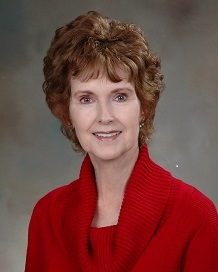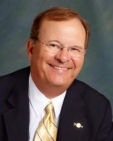As published in the Current in Carmel, you can see that the political fight still continues between Carmel Clerk-Treasurer Diana Cordray and others in City Hall.
Previously, the fight included:
– A lawsuit from the mayor against Cordray
– A misplaced “joke” in that report that led Mayor Jim Brainard to criticize Cordray publicly
And now it appears that Mike Shaver, a consultant who works closely with Cordray, is coming under attack.
Previously a “behind-the-scenes” kind of guy, Shaver has made headlines himself for publicly apologizing for accidentally included a flow chart that had the tasteless joke included.
Mayor Brainard, some current city councilors and some potential City Council candidates all asked me questions about Shaver. Some asked me about how much he makes and what he does for Cordray and I objectively told them what I knew. But the fight has really started heating up because one city councilor, Ron Carter, has gone public with his criticisms. Others, such as Brainard, say they would rather not comment publicly on their opinions about Shaver and would rather focus on other issues.

Carter requested invoices for Shaver’s work and he has made no secret of the fact that he doesn’t think his $82,000 in invoices since 2012 are a good use of taxpayer money, in Carter’s opinion.
Carter raised the question about how Shaver could be paid so much since the Clerk-Treasurer’s Office didn’t have that much budgeted for consulting. I looked through the invoices and budgets and found that, yes, Shaver did submit invoices in 2014 for more than the consultant budget that year, but had not been paid all of the money. I asked Cordray and she said that invoices could be paid out of next year’s budget or you can transfer money — as long as its less than $50,000 a year — for each city department. So I looked into Carter’s questions and I didn’t find that anything shady occurred. Some might disagree with Cordray’s use of the money and would do things differently, but I believe she followed the law and she provided copies of the ordinances to prove that.
So the question comes down to whether you think it’s a good use of taxpayer money. Some might disagree on the need for the consultant’s work and the value of it, but let’s look back at some of the history of Cordray and her office to see why she is spending this money now. Because she’s been in office for almost two decades, but her use of consultants is more recent.
Cordray was elected in 1995 and took office in 1996, around the same time that Carter and Brainard were first elected, so they are all very familiar with each other. Carter and Cordray both admit that there’s no love lost between the two.
Cordray has six employees on staff. She’s only increased her staff by two people in the last 19 years, despite the rapid growth. According to the U.S. Census, conducted every 10 years, Carmel grew from 25,380 people in 1990 to 79,191 in 2010.
Cordray said her workload has just gotten bigger year after year and it’s hard to keep up with all of the information that she’s required to file and organize. She also feels a responsibility to not just pay the bills and organize the documents, but to understand what it is she is signing. That can be difficult given the mountain of confusing information.
In 1998, Cordray implemented a software called LazerFische to help electronically organize all of the city documents. Some files are made public and others — such as payroll documents that include private information — are kept in-house. The public documents are accessible on a Web site and she said that’s important for transparency so everyone can understand how their tax dollars are being spent. At first, Cordray’s office had to literally scan in all of the documents by hand instead of just filing the electronic versions, which was very time consuming. Boxes of files — many of them from the Carmel Redevelopment Commission — were ceiling-high in her office for some time.
Cordray’s job became even more demanding when it was decided by lawmakers that Cordray would serve as the treasurer to the CRC, which means she would be responsible for filing their paperwork, paying their bills, etc. It also meant new transparency requirements for all redevelopment commissions, so that is one reason for the ceiling-high stacks of boxes.
Cordray felt it was necessary to bring in outside help. She had staff, and occasional interns, to help with sorting and scanning. But she needed a policy expert to make sense of what all of these documents mean. And to help find documents that were not provided.

Cordray was familiar with Shaver because his company Wabash Scientific did some limited consulting work for the Carmel City Council in 2012. Shaver said he had to end that project early because of a personal family matters to attend to. He began working with Cordray in early 2013 and much of his work has centered on government transparency.
The process began with going through the mountains of information. Shaver charges $150 an hour, so he didn’t spend his time going through boxes, but he did familiarize himself with the newly obtained CRC documents and began to form questions to share with Cordray. He would accompany Cordray to some meetings and ask questions that he said some people didn’t want asked. Questions about missing documents and numbers that didn’t add up to him.
As a result, some people, like Ron Carter, were not a fan of Shaver. Carter dealt with Shaver because Carter is president of the Carmel City Center Community Development Corporation, known widely by the name 4CDC. This organization is a private non-profit and is not a department of the government. But the 4cDc is closely tied to the CRC and the City of Carmel because the organization deals with government grants. There is some debate about whether the 4CDC gives or receives grants, but tax returns suggest to many that they do both. In fact, the 4CDC is listed on the City of Carmel’s Web site, under the “Our Government” tab, under the category of boards and commissions. On top of that, it was reported in 2011 that the 4CDC received $2.50 in a surcharge from every Palladium ticket sold, because the 4CDC was formed in 2009 to take over construction of the office-theater building — called the James building — across from the Palladium after the recession hit. Pedcor was originally behind the construction of that building. The 4CDc also paid the remainder of the salary allegedly owed to Les Olds, former director of the CRC.
It might sound like I’m getting off topic, but there’s a point. Because there’s a question about grants regarding the 4CDC, there have been some who say that the organization needs to open up its books for transparency. This has sparked a debate because Carter believes the private organization is not required to release everything that’s been requested. Shaver and Cordray have been among those who have asked the 4CDC for certain documents and files. This explains part of the difference of opinion between Carter and Shaver. Of course, it doesn’t hurt that Carter thinks that Shaver’s questions are fueled by a political motive that’s out to damage Mayor Brainard’s reputation. Carter has been a big supporter of the mayor and Cordray and Shaver have maintained that they are not political, but they have often strongly disagreed with the mayor when it comes to policy.
Much of this tension was simmering under the surface until Cordray began to start asking her questions in public and to the media. She released a report that asked for an independent audit to determine the risk of a Special Benefits Tax. Carter said he feels there is no risk of the SBT and that continuing any discussion only helps to spread a damaging misconception that Carmel can’t pay its bills.
This has led Carter to begin to look into Cordray’s office. He requested Shaver’s invoices and he came to the conclusion that he felt Shaver was overpaid. He also thinks Shaver “shouldn’t be spending his time running political interference for the Clerk-Treasurer.” That’s why Carter said he wanted to open up Cordray’s documents.

“The clerk-treasurer has made the case for years that she operates under the idea of transparency,” Carter said. “It’s time that she be called out.”
Cordray responded to that statement by providing an audit of the Clerk-Treasurer’s Office by the Indiana State Board of Accounts. The audit found nothing wrong with Cordray’s budget.
But Carter said there’s a very close relationship between the SBOA and the Clerk-Treasurer’s Office and that Cordray will often lobby the SBOA.
Carter tells Current that he feels there’s a need for Carmel to become a “2nd class city” which means Carmel could replace its elected clerk-treasurer position with a city controller appointed by the mayor. Cordray said such a system would eliminate checks and balance. Carter said it would be better to have a controller because that position could focus more on financial planning and other issues that are often handled by Curt Coonrod, a financial consultant for the city.
“If we had a controller, we wouldn’t need Curt Coonrod as much,” Carter said. “Coonrod kept us out of trouble for a number of years as a result of some of Diana’s mistakes for not advertising the budget correctly and timely.”
Carter went on to say he wasn’t impressed by Cordray’s credentials and that a controller would act more like a CFO for the city.
“If we were looking for a controller, Diana’s resume wouldn’t make it through the door,” she said.
Shaver said Carter can question Cordray’s credentials all he wants, but that appears to be political in his opinion. He points to seven plaques on Cordray’s wall for “Certificate of Achievement for Excellence in Financial Reporting.”
Wabash Scientific Invoices
11/5/14 – $45,330
7/8/14 – 17,850
3/26/14 – 5,310
YEAR TOTAL: 68,490
12/11/13 – 4,890
1/29/13 – 5,797.50
YEAR TOTAL: 10,687.50
12/11/12 – 3,472.50 (actually for City Council consulting, not Clerk-Treasurer)
TOTAL FOR 12-14: $82,650
Clerk treasurer consulting fees
2013 actual – 8,135
2013 budget – 28,245
2014 actual – 20,135
2014 budget – 29,500



